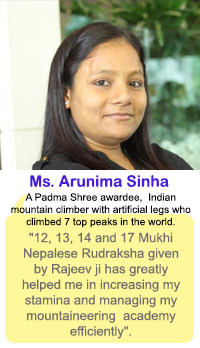DASHAVTARA SHALIGRAM
11 The Krishna type :
i) Marked with a vanamala and discus on his right side. ii) Black in colour with two equal circular marks at the opening. iii) Small in size with a yellow spot and several dot prints on his sides. iv) With the upper side like that of a tortoise, and the entire lower middle portion resembling its mouth. v) Taarksya : a) Black in colour and long in shape resembling a pillar.b)Shaped like a spear head and marked with two circles, one lotus, one ring and one gem. vi) Baalakrsna : With a long opening having dot-prints on his lower side. vii) Gopala : Deep black in colour, big in size with a good looking opening. He has two circular marks and the marks of vanamala and shrivatsa on his upper side, and also teeth like marks on a rear side. viii) Madanagopal : A Gopala type holding a lotus mark on his upper or lower side. ix) Santaanagopal: Long in shape, black in colour with an opening of the half moon shape. x) Govardhanagopala : Witeh a comparatively less height and round upper portion. Marked with a stick, a garland, a whistle and long lines and also having silver dots all over his body. xi) Lakshmigopal : Shaped like the egg of a hen and marked with vanamala, a plough, a whistle, and a ring on different sides. xii) Kaliyamardana : Marked with a golden line and three dot-prints. xiii) Syamantahaarin : Big in size, with the colour of a sword and having the marks of a vanamala and shrivatsa on his upper side. xiv) Chanooramardan : Green in colour with two red spots and a linear mark on each of the right and left sides. xv) Kamasamardana : Blue in colour, having a different colour either at the front or on a rear side. The Siva-nabha-murti-salagrama has a linga-like form on top where there is also an aperture; it is perfectly round in shape and cold to touch. It is auspicious and secures all prosperity.The Hiranya-garbha-salagrama brings all good fortune to the worshipper; it is like worshipping a thousand Shiva-nabha salagramas. It assures worldly prosperity. There was a difference of opinion as the whether the Shalagram broken into pieces, or those having a crack on their body, or even two or more Shalagrams having a joined body, When worshipped can produce any good result or not. The Skandapurana rules that each of the above types of Shaligrams, if worshipped with dedication, produces very good results, and as such, should be duly worshipped without the least hesitation. (khaditam lagnam shalagrame na doshadam, ishtantn yasya yaa murtih sa taam yatnena pujayat - Skanda Purana quoted in Praanatoshanitantra page 347 ) Reference taken from (Rabindra kumar Siddhantashastree 1985. Vaishnavism Through the ages. “Different types of Shalagram” page 27-49. Munshriram Manoharlal Publishers pvt ltd. New Delhi. Hard bound 200 pages)
(Narada tells Brahma that he was enlightened by the letter on many topics, and requests him that he be pleased to tell him about the other Salagrama-stones; about their origin, characteristics like colour and field, the differentiation in respect of divine form, and their suitability for purposes of worship.)
(Brahma proceeds to tell Narada about the salagrama-stones: their origin, identification, colour, field and other details.)
There is in the country of Avanti, a sacred mountain around which is the site which is the source of all the salagrama-stones.
Merely to remind oneself of this sacred site is to get rid of all the sins that have accumulated in the past. It is here that the river Gandaki, which destroys all sins, flows. By a touch of the waters of this river, one obtains residence in the realm of Vishnu. At the foot of the mountain in this site is a great stream known as Chakra-tirtha. The source of that river is said to be Vishnu himself; and in that mountain-stream, the god who wields the discus dwells. He abides here along with his consorts Lakshmi and Bhu, and in every stone that occurs in this sacred site. In the bowels of the rocks free from wind and cold the salagrama-stones are formed, with all adorable characteristics. On auspicious moments, these sacred stones get formed by the grace of God. The formation of spiral marks, the chakras, in these stones is explained as follows: After thousands of years, the animal called vajra-kita (the adamentine worm) was born in these stones; the animal was in fact the form which Vishnu himself assumed. Having entered into the bowels of these stones, the animal, golden coloured, mighty and brilliant like a flash of lightning, making a sweet noise, carves out the marks of discus of numerous kinds and various other marks with ease in the stones. The animal, who is Vishnu himself, the lord of Lakshmi, resides inside these stones for countless years; the presence of Godhead is unbroken here.
By a mere look at these stones, all the sins that one had accumulated will at once get destroyed. The variety of forms, colours and other characteristics of the salagrama-stones. The sacred stones may be white, yellow, red, black, green, tawny or ash-coloured; they may contain stains, and they may be multi-coloured. The colours might be excessive or faded; the colours may otherwise be difficult to determine. The stones occur thus in many colours and forms.
The salagrama-stone is described as the ‘field’ for the presence of Godhead. The differentiations in this regard are dependent on the colours. The Vasudeva-salagrama is white in hue; the Hiranya-garbha-salagrama is yellow; the Pradyumna-salagrama is red. Vishnu-salagrama is black stone; Narayana-salagrama is greenish in colour; Narasimha-salagrama is red; and Vamana-salagrama is like the atasi flower in colour (flax, Linum usitatissimum)
The colours have their own effects and influences. The ash-coloured salagrama stone is especially suitable for worship by ascetics. The stones which are stained bring decay and destruction, the multi-coloured stones are also unfit for worship, unless it be Ananta-salagrama. Highly coloured stones cause misery; the faded colours destroy the lineage; the colours which are indistinct and uncertain make for death.
The tawny-coloured stone is consort-killer; the bluish-stone brings wealth; the black-stones cause nourishment and prosperity; and the red-stone brings in sovereignty.
Excessively red-stone, however, deals death; the fair-coloured stone (viz. White) bestows wealth; multi-coloured stone makes for prosperity, while the faded colours are not useful when worshipped. There is some confusion here with regard to the expression ‘bahu-varna’. White coloured stones facilitate the obtainment of emancipation, and the stone with indistinct and uncertain colours destroy everything.
The salagrama stones differ with regard to their circumference (parimana), which is measured in terms of the size of the aperture. The wise one will tie round the middle of the salagrama-stone a thread; and if the aperture is located at the spot which marks one-eight of the thread’s length, then the stone is of superior variety; it may also be of the middling variety.
 Google has chosen Shaligram Shala ( shaligram.com) as the world's first 5 star
Google has chosen Shaligram Shala ( shaligram.com) as the world's first 5 star  rated Rudraksha supplying Company
rated Rudraksha supplying Company 

 Google has chosen Shaligram Shala ( shaligram.com) as the world's first 5 star
Google has chosen Shaligram Shala ( shaligram.com) as the world's first 5 star  rated Rudraksha supplying Company
rated Rudraksha supplying Company 

 Identification of Shaligram
Identification of Shaligram 












































